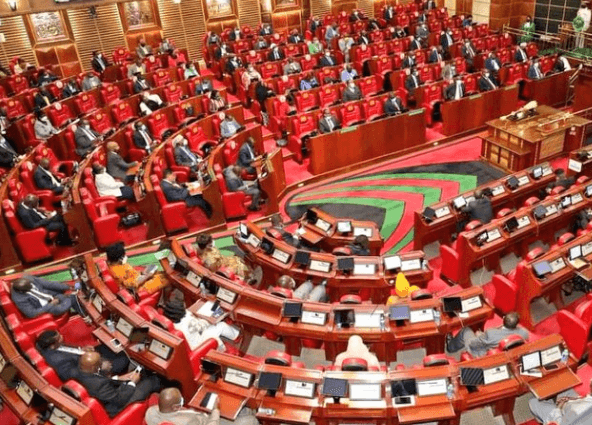The devastating impacts of climate change will continue having a devastating impact on human health, the country’s economy and biodiversity, a new report shows.
As such, there is a need to support communities to adapt and build resilience.
The report ‘Climate Change Impacts in Kenya; What Climate Change Means for a Country and its People’, shows that heat waves, droughts and heavy rainfall are becoming more severe and frequent with devastating impacts.
Patricia Nying'uro from the Kenya Meteorological Department, Dr Joyce Kimutai from KMD, Kenneth Mwangi from the World Resource Institute and Winnie Khaemba from Climate Analytics authored the report that was launched on Wednesday.
Among those who attended the launch included Environment PS Dr Festus Ng'eno, Nominated Senator Hamida Kibwana, Kenya Red Cross Society secretary general Dr Ahmed Idris, chairperson of the Environment and Climate Change at the Council of Governors Wilber Ottichilo and Peter Odhengo from the National Treasury.
Ng'eno said it is crucial to prioritise equity in climate initiatives, as vulnerable communities are the most affected by the impacts.
"We must ensure no one is left behind in our efforts to combat climate change. There is a need to increase funding for research that contextualises the global model outputs, sector-specific costs of climate impacts, the cost of inaction, and the role of local and indigenous knowledge, among other factors, if we are to adequately adapt to the impacts of the changing, especially at the local level.”
Idris decried that every year, despite Kenyans working harder, the country is losing its capacity to produce food due to the impacts of climate change.
"Last year, we faced a food crisis in July, a cholera outbreak in September and a flood crisis in October. Climate change is an undeniable reality—a troubling reality. The time to address this crisis is now.”
Kibwana said it's crucial to integrate coordinated climate adaptation strategies and policies that are sensitive to climate issues now.
"We must listen to communities and collaboratively create sustainable climate solutions. Legislators must enact laws to ensure a sustainable and resilient Kenya in the face of climate change.”
Odhengo said under the Financing Locally Led Climate Action programme, the National Treasury emphasises the importance of citizen engagement and local leadership in advancing climate action efforts.
"This approach highlights the critical role of community involvement in developing sustainable environmental strategies.”
Ottichilo said Sh7.3 billion for Financing Locally-Led Climate Action Programme has since been dispersed to devolved levels.
The governor said the money would go towards community-led programmes.
“Ward-level committees are formulating climate change programmes. They will come up with proposals which will be vetted and forwarded to Treasury who will release money directly to the community,” Ottichilo said.
Immaculate Ntalai from Nadupoi women group, Kajiado county, said in response to increased droughts, they have launched community-led initiatives to secure sustainable water access and support their livelihoods.
"By leveraging local knowledge and resources, we are building resilience against the impacts of climate change. We are committed to this effort and determined to find ways to adapt for the sake of our children," Ntalai said.
The report says the average temperature in East Africa has increased by 0.7 degree celsius and one degree celsius, depending on the season between 1973 and 2013.
Key findings from the report show that wheat yields in Africa are projected to decline by 15 per cent by 2050, a significant decrease compared to the 1.9 per cent reduction projected globally by mid-century.
Tea production in Kenya is projected to fall by 26 per cent by 2050, even with ambitious efforts to reduce greenhouse gas emissions.
The report says urgent climate finance is needed in Kenya to support adaptation and low-carbon development for a liveable future.
Climate change is predicted to put an additional 75.9 million people at risk from malaria in eastern and southern Africa by 2080, with the greatest risk in eastern Africa.
To mitigate the effects of climate change, local and traditional knowledge systems, particularly those related to natural resources and territories held by indigenous communities must be mobilised and enhanced.
The report shows climate change in Kenya will trigger the reduction of food in many parts of the country, with 2022 data indicating that 4.3 million Kenyans required humanitarian assistance due to drought-related food emergencies, including the loss of livestock.
The report shows that Kenya needs an estimated Sh7 trillion to implement an adaptation plan for the period 2020-2030.
Available data shows that only Sh243.5 billion had mobilised, a third of the total finance required.
















